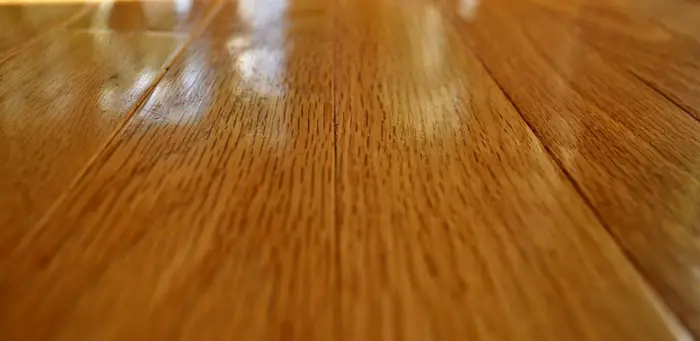Tupperware makes it easier than ever to tote your lunch, meal prep, or store uneaten portions of foods in the refrigerator or freezer; however, just like all other nondisposable dishes, they also get dirty and need to be cleaned.
Only when it’s time to clean your other dishes, you can simply pop them into the dishwasher, which may cause you to wonder, can you put Tupperware in the dishwasher?
The answer is yes, provided it is dishwasher safe; otherwise, you put yourself at risk of various health and safety issues.
About Food Safe Plastics
There are various types of plastic used to package commercial foods and drinks, which though deemed food safe, are not recommended for reuse or to be cleaned in the dishwasher. For instance, there is polyethylene terephthalate plastic, also known as PET or PETE, which is the clear plastic most beverage bottles are made of.
Meanwhile, cooking oil bottles are often made of polyvinyl chloride, or PVC, and then there is high-density polyethylene, also known as HDPE, which is used for juice bottles and milk jugs, etc.
On the other hand, there is also more heat resistant food-safe plastic, such as polypropylene, which is most often used to make nondisposable plastic containers, such as Tupperware, which may be deemed as more dishwasher safe.
Why Putting Non-Dishwasher Safe Plastic in the Dishwasher is Not Recommended
According to Consumer Reports, food-safe plastics not deemed as dishwasher safe are not heat resistant and often thin and flimsy; therefore, they can melt under the machine’s high temperatures.
When this occurs, it can cause fragments of the plastic to chip off in the dishwasher, which can become lodged in the filter, clogging it. A clogged filter can also eventually damage the dishwasher.
In fact, even thicker, more durable plastic, such as the plastic used to make Tupperware, can also become damaged or damage the machine if it is not designed to be dishwasher safe.
Furthermore, the dishwasher’s heat can also cause harmful chemicals, such as BPA and phthalates, to release from plastics that contain them, which can increase the risk of cancer, as well as various other health risks.
Therefore, before placing your Tupperware, or any other plastic food container, into the dishwasher, first, be sure it is labeled as dishwasher safe. According to Tupperware, most food containers made after 2010 are dishwasher safe, while any Tupperware made after Septemeber 3, 1979 is also BPA free.
However, if your reusable Tupperware container is not labeled as dishwasher safe, then it should be hand washed to ensure your safety.
How to Safely Wash Tupperware in the Dishwasher
If your Tupperware is labeled as dishwasher safe, then it can be safely cleaned in the dishwasher; however, it is just as important how you load the container to also ensure safety.
Place the Tupperware on the top rack where it is farthest away from the dishwasher’s heating element, and avoid washing the container using high heat wash or dry settings.
Otherwise, placing the Tupperware on the lower rack of the machine puts it too close to the heating element, which can melt or warp the container, causing the lid to no longer fit, or damaging the container altogether, as well as the dishwasher.
Placing the container on the lower rack also exposes it to the high-pressure jets, which can cause the container to become dislodged from its position and fall on the heating element at the bottom of the dishwasher, which can also cause damage.
The Tupperware will still have to be towel-dried once it has been cleaned, as the dishwasher will not get the plastic completely dry.
How to Hand-Wash Tupperware
To hand-wash your Tupperware, simply use a soft sponge or cloth, along with soapy, warm water to remove the food stains.
Once the container is clean, use a soft towel to dry the container, or simply allow it to air dry in a cool, dry area.
Avoid using abrasives, such as abrasive sponges, when cleaning your Tupperware because it can cause nicks and scratches on the surface of the plastic, which can allow food particles to seep into the crevices and stain the Tupperware. It also creates spaces in the tub and/or lid for bacteria to grow.
How to Properly Store and Use Tupperware
Once your Tupperware has been properly cleaned, it is important to also store it properly in order to prolong its life, as well as its health.
To allow moisture and odor to evaporate from the Tupperware, it should be stored without the lid attached. The Tupperware should also be stored away from sharp items that can pierce, scratch, or slit the container.
When using your Tupperware, avoid placing hot liquids, such as sauces, soups, hot beverages, or cooking oil, into the container, as it can be hot enough to damage the container. Instead, allow the hot liquids to cool and then place them into the Tupperware.
It is also helpful to understand which type of lid is best for storing certain types of foods; otherwise, it can prevent your food from remaining fresh or even allow liquids to spill from the Tupperware.
In general, round lids help seal liquids in and air out, while rectangular lids help seal out air but are not liquid-tight. Therefore, if you are using a container with a rectangle lid to store liquids, be sure the container is kept in an upright position to prevent the liquids from spilling out.
Related Questions
How Do I Know if My Tupperware is Dishwasher Safe?
While some Tupperware clearly states whether the container is dishwasher safe on the packaging, some Tupperware may not. However, most containers will also include a dishwasher safe symbol on the actual container itself.
Therefore, if the packaging does not clearly state if the Tupperware is safe for the dishwasher, then you will have to inspect the actual container for the dishwasher symbol.
The dishwasher-safe symbol looks like a pair of circles with various slanted lines above them, not to be confused with the food-safe symbol, which features a wine glass and fork side by side, or the microwave-safe symbol, which features a set of squiggly lines, either by itself, along with an image of a set of dishes below the lines, or along with an image of a microwave.
How Do I Safely Remove Stubborn Stains and Odors from Tupperware?
Because Tupperware is made of plastic, and plastic is permeable to certain liquids and foods, you may notice that after being in use for some time or after storing certain liquids or foods, the container may retain certain odors and food colors, in which case you can deep clean it to remove them.
To do so, make a paste of water and baking soda, and then clean the lids with it. Next, fill the tub with damp newspaper and then allow it to sit for at least a day.
After 24 hours, wash the tub with plain dishwasher soap and then allow the soap to sit in the tub a while before rinsing. If the smell or stain still persists, coat the inside of the tub with lemon juice and then allow it to sit for a few seconds.
If this still doesn’t solve the problem, clean the tub with a mixture of vinegar and water.
Once the tub is clean, set it aside and leave it unsealed to help keep it air fresh.
How Many Times Can I Wash Tupperware In the Dishwasher Before It Needs to Be Replaced?
Tupperware should be smooth with no bumpy patches or grooves in order to ensure the safety of your food.
However, over time, it will gradually begin to degrade due to normal wear and tear, which can be accelerated by the use of harsh cleaning detergents or even by storing acidic foods, such as tomato sauce, in the container, as well as by microwave use.
Therefore, how many times you can wash the Tupperware in the dishwasher before it needs to be replaced will depend on the state of the container. In other words, as long as the container is free of any damage, you can continue to wash it in the dishwasher indefinitely.
See Also:
Can I Use Dishwasher Detergent To Hand Wash Dishes
Can I Put Liquid Detergent In The Drum?
Can You Use Laundry Detergent As Bubble Bath


